Innovative tech: The challenges Product Managers and Engineers face
When product managers and engineers work well together, magic can happen. But there are a few challenges that both roles face in delivering tech innovation.
Leading VS following the competition in tech innovation
Talking to your staff and your customers to identify improvements is an obvious (and good) path. But most engineers and product managers are already doing this.
What can you and your organisation do to get ahead of the curve, without neglecting your day to day delivery responsibilities? How can you identify the non-obvious but potentially fatal problems that can sink your business or your team?
Inspiration can come from anywhere, but here a few tips:
- Look at companies you don’t compete with or technology that hasn’t yet been applied in your industry.
- Book recurring time outside of your normal working environment for longer-term road mapping. Innovation shouldn’t be a one-off initiative; it should be a routine.
- Ask yourself, what will change in your industry over the next 1, 3, 5, and 10 years?
- Read regularly, whether it’s tech blogs, industry news or books, such as ‘Zero to one’, ‘Competing Against Luck’ and ‘Exponential Organizations’.
- Follow venture capital firms who often are investing in innovative technology at the cutting edge of tech.
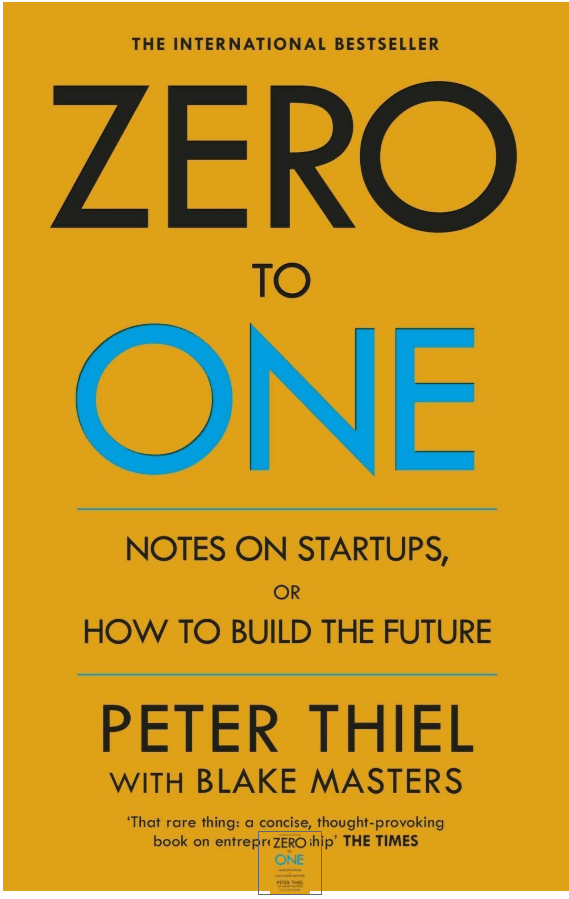
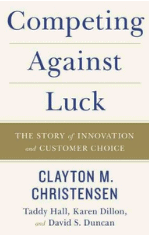
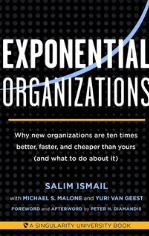
Getting insights from a trusted third party can also be invaluable, helping you to identify business goals, user challenges and main opportunities.
How can we help?
Our requirements analysis/problem identification workshops provide answers to your critical tech questions.
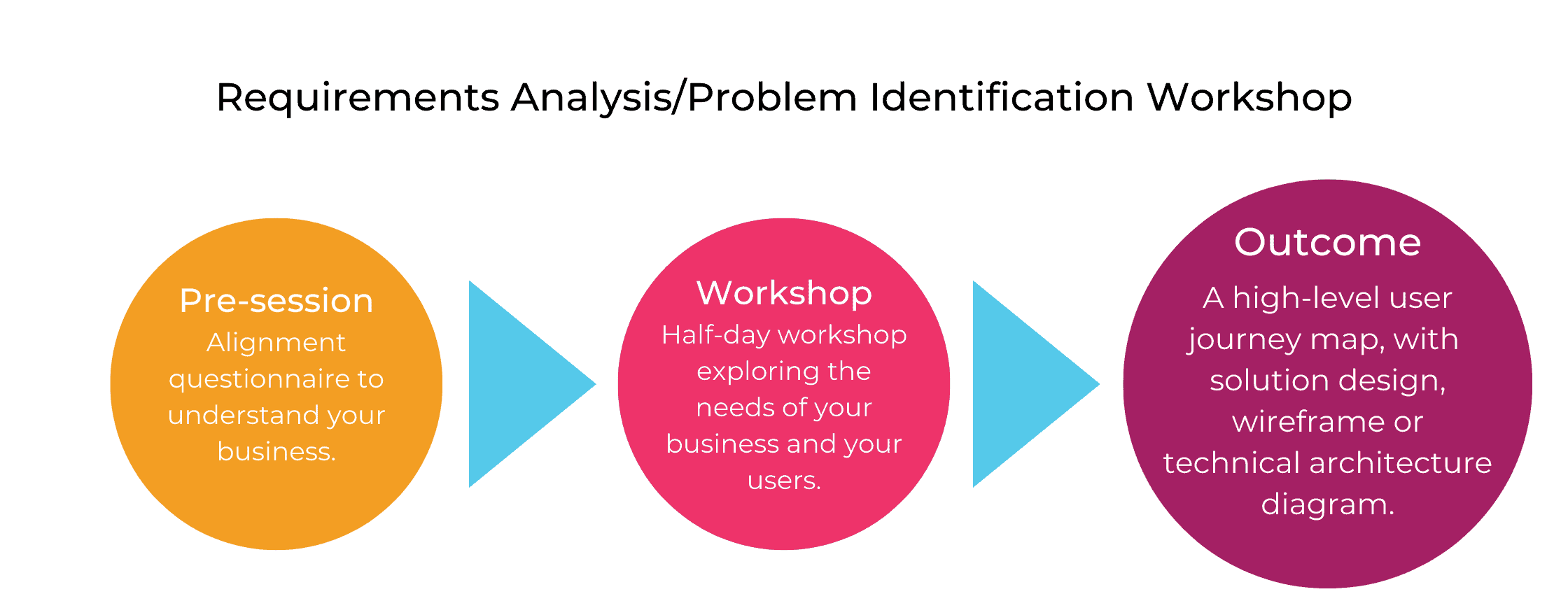
If you are struggling to find the time for tech innovation or need help identifying requirements or problems, please let us know.
How to get the broader team to engage with tech solutions
Tech in isolation, without engagement from real-world users and customers, doesn’t have a high success rate. Neither do solutions that leadership don’t approve budgets or funding for!
So how do you get stakeholders and particularly influential stakeholders from your company engaged in what you’re doing?
Rapid prototyping may be the solution you’re looking for.
It’s easy to get approval for rapid prototyping because it’s a low-cost, low-risk approach to solving potentially some of your organisation’s highest value problems.
The beauty is that by involving executives in the problem definition, and solution design they can’t help but be more engaged.
How can we help?
We work with you to design prototypes that directly address your challenges.
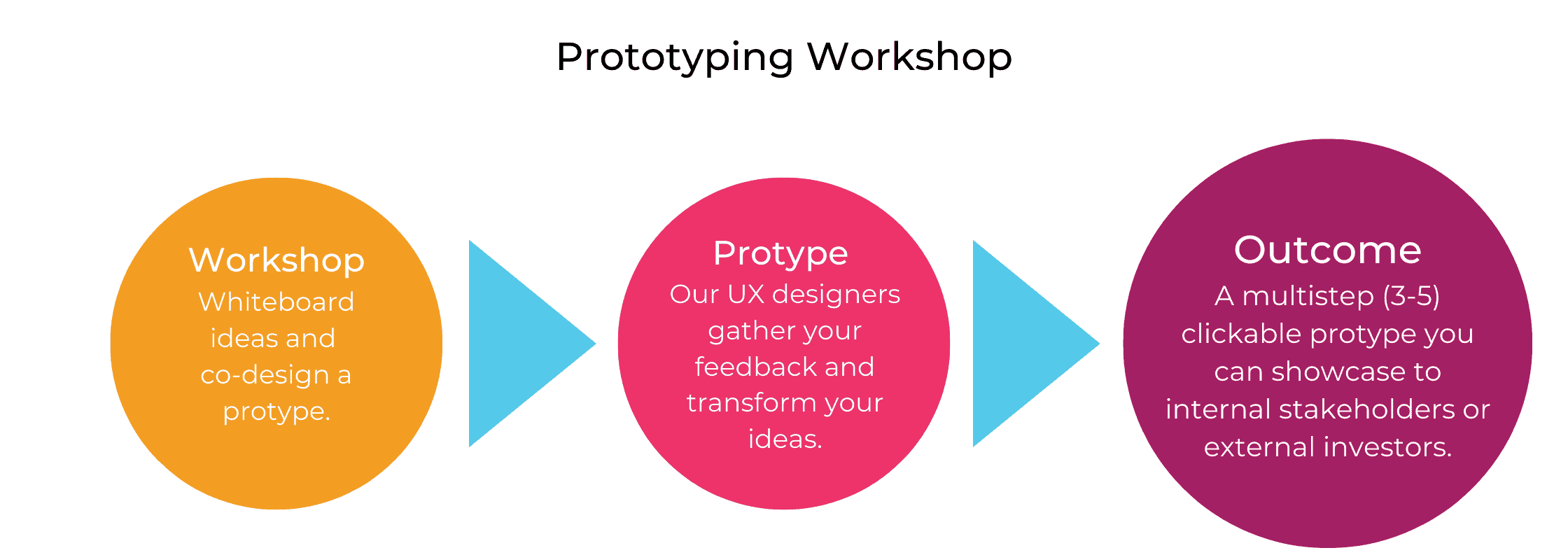
Prototyping is recommended when you need to communicate your concept quickly and clearly to an audience. The most innovative tech companies innovate fastest when everyone is behind the idea – contact us to learn more about how we can help you get your idea over the line.
Finger-pointing galore!
So your system goes down. For four hours. The hosting infrastructure supplier points fingers at your backend developer (a contractor), who in turn blames your outsourced testing team, who blames the BA for poorly defined specs.
Ultimately though, you know that everyone on the team is capable and competent and there have been rumblings about the underlying architecture. What gives?

Blame is never useful. But the identification of problems, combined with an action plan to solve those problems going forward is.
Often a technical assessment/project health check will remove ambiguity and clarify a prioritised set of actions to get you where you need to go.
How can we help?
Our technical assessment gives you an expert report on the health of your system, and a prioritised list of actions to improve it.
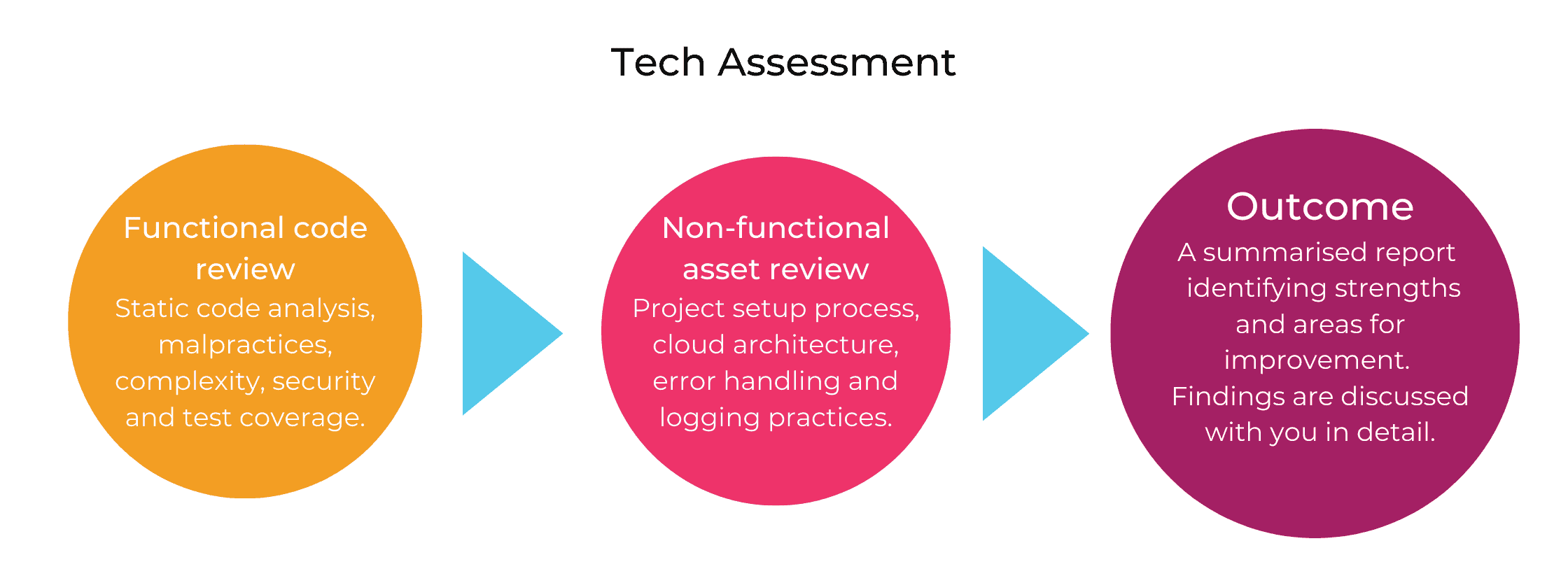
If you need fresh eyes to identify opportunities for improvement and risk reduction, please contact us for help.
Going to market
It’s time to launch a major new project, but your in-house resources don’t have the capacity. The marketing team put together a brief and you go out and collect three quotes from development agencies. One comes back at $20,000, one at $80,000 and one at $200,000. They’re all from local, onshore reputable agencies. How can this happen?
When a brief is basic, and the project is significant, a lot of interpretation is required by the supplier. The supplier needs to fill in the blanks.
Providing an exact project plan and architecture requires a bunch of decisions to be made about *what* the solution needs to do and *how* the solution is to be implemented.
Without those decisions being made or documented, the supplier’s interpretation is often what leads to wildly varying (and not particularly useful) costs estimates.
To get a more useful and accurate set of costings, clarifying and documenting the scope is the solution.
How can we help?
Our scoping service enables you to get comparable quotes. High-level scoping and planning is best suited for projects in an early stage to get a sense of investment or timeline required.
More detailed scoping is best suited for organisations who understand the problem they’re trying to solve and have clarity on the direction they intend to take.
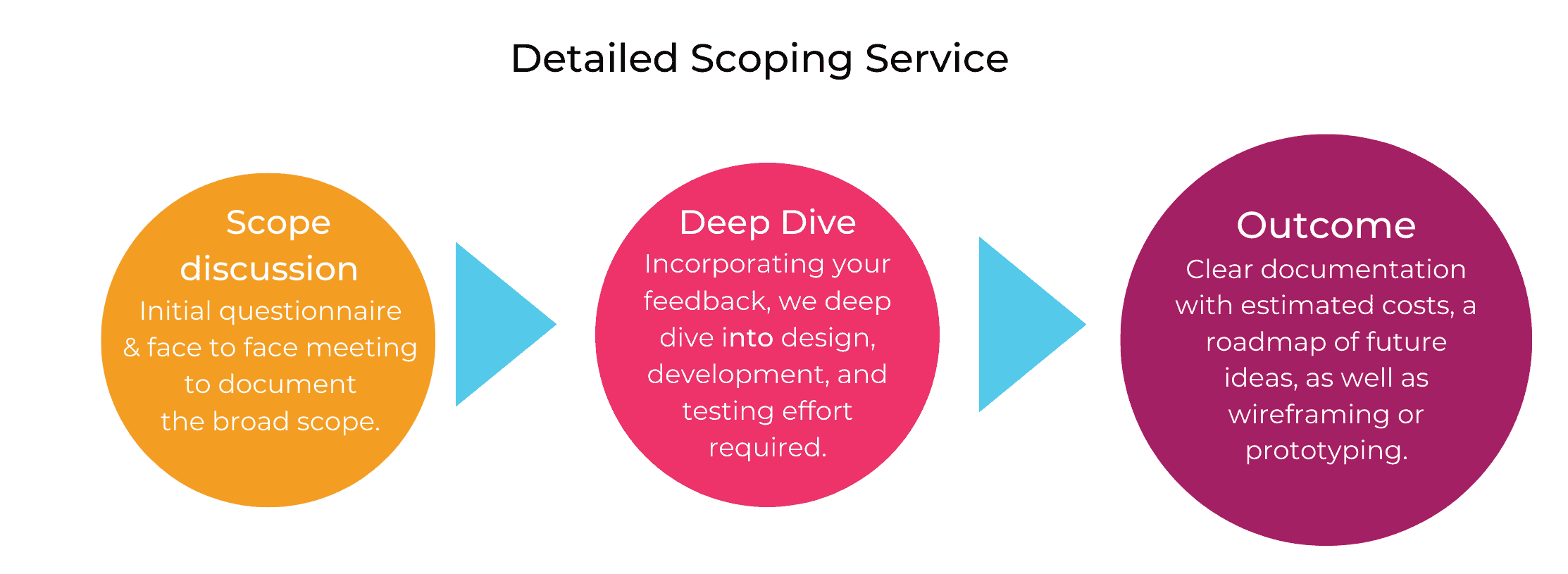
Whether you are a product manager, engineer, or an up and coming developer, we want to hear your innovation challenges. Please do not hesitate to contact us if you have any questions or require our help.

